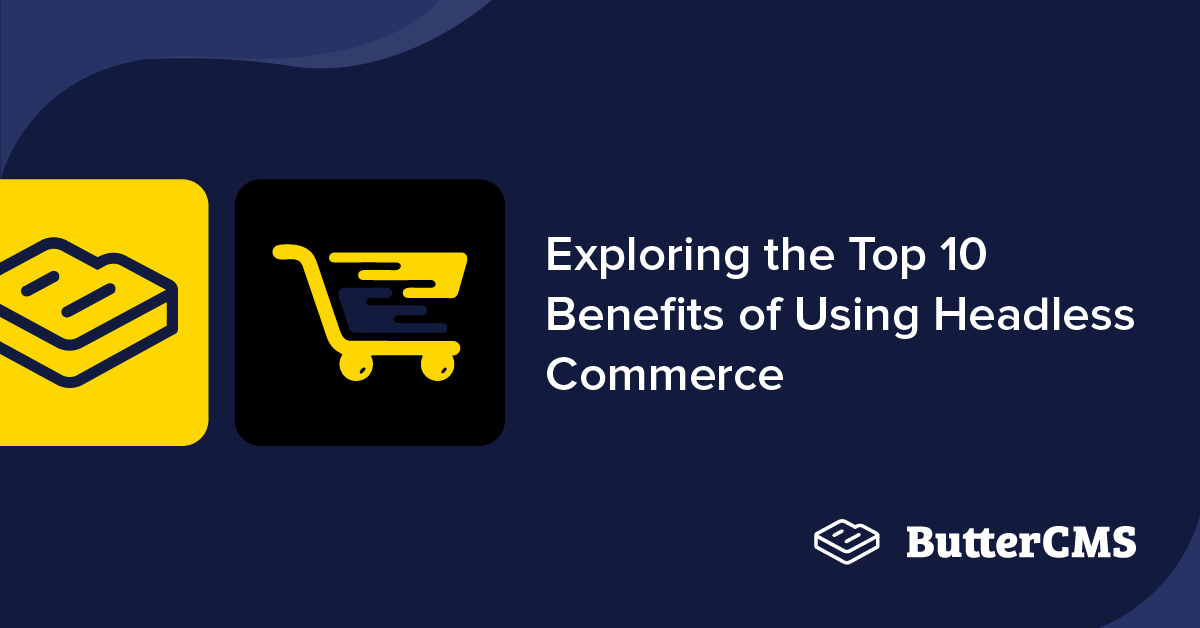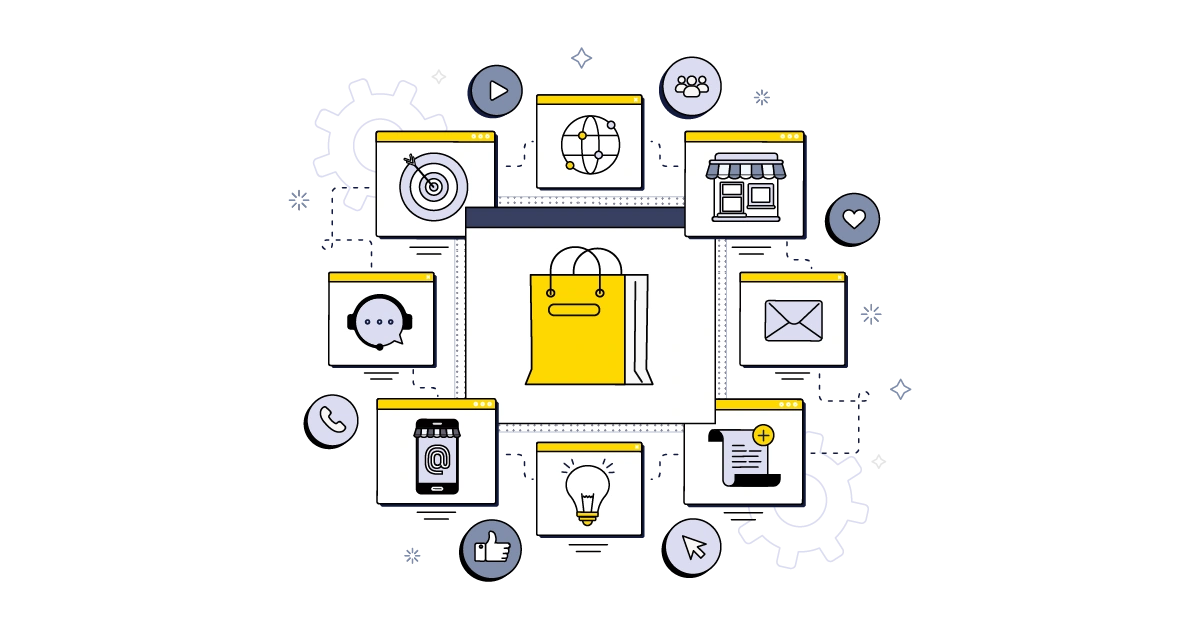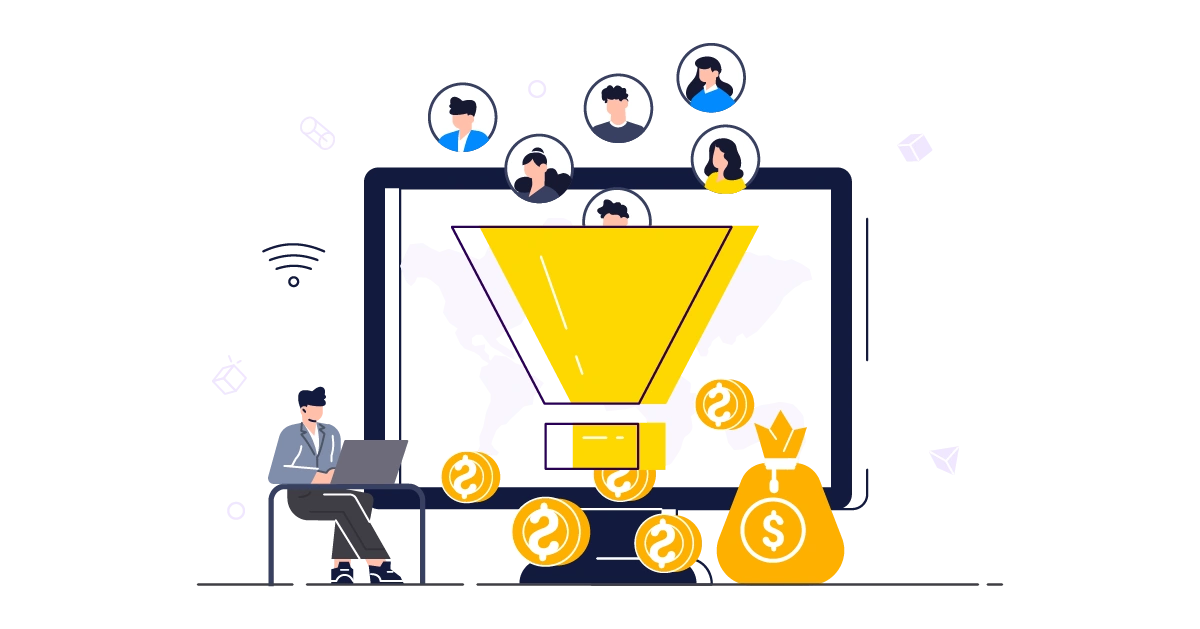- What are the benefits of headless commerce over traditional e-commerce?
- Benefit #1: Familiarity for developers
- Benefit #2: Familiarity for content marketers
- Benefit #3: Flexibility
- Benefit #4: Increased UX/UI control
- Benefit #5: Delivering omnichannel experiences
- Benefit #6: Scalability
- Benefit #7: Integrations
- Benefit #8: Reduced time-to-market
- Benefit #9: Improved conversion rates
- Benefit #10: Lower customer acquisition costs
- Final thoughts

GSD
Exploring the Top 10 Benefits of Using Headless Commerce
Posted by Faith Pueneh on September 21, 2023
Over the last decade and a half, online retailers have witnessed massive changes in consumer buying habits. With new communication and commerce channels emerging every year, in order to remain competitive many e-commerce brands have found themselves needing to ensure that their customers are not only satisfied with their purchases but with the entire shopping experience as a whole.
It is this need that has propelled the adoption of headless architecture in recent years within the e-commerce space. By implementing a headless commerce approach, you will be able to provide your customers with a seamless shopping experience across all of your core digital touchpoints.
But that's not all, in this article, we will go through the top ten benefits of headless commerce to help you plan your e-commerce architecture wisely and stay at the top of your game, whether you are a small brand owner or a seasoned enterprise.
Table of contents
What are the benefits of headless commerce over traditional e-commerce?
Headless commerce has become a preferred choice for e-commerce businesses seeking to differentiate themselves in the market. There are numerous benefits to adopting a headless commerce approach. Let’s take a look at ten of the most compelling ones:
Benefit #1: Familiarity for developers
In contrast to traditional e-commerce platforms, which come predefined and may limit developers to specific languages and tooling, headless commerce allows your developers to use the languages and frameworks with which they are already most familiar (such as Next.js) and that your e-commerce brand likely already uses.
This means the adoption and implementation of headless commerce can be carried out without your developers having to undergo the potentially steep and lengthy learning curves that often accompany traditional e-commerce platforms.

Benefit #2: Familiarity for content marketers
Now, when it comes to marketers, a headless commerce approach can provide them with a familiar environment for designing, customizing, and creating content for the user interface (front-end of an online store). Due to the decoupling of the presentation layer and backend commerce functionality, marketers can use their existing tools and platforms to manage and optimize campaigns rather than learn a new set of tools.
Benefit #3: Flexibility
Everchanging market conditions, customer preferences, and technological advancements can make it hard for even the most historically agile e-commerce brands to stay competitive in today's online environment. If you were to add on the limitations of traditional e-commerce architecture, you'd quickly find yourself in a tough situation where changes you need to implement for your presentation layer directly impact your backend and vice versa. Ultimately, this makes it difficult to make updates and improvements to your platform efficiently and without downtime or errors.
Luckily, this is avoidable with headless commerce. When using a headless architecture for your e-commerce platform, you'll be able to apply necessary changes (be it adding integrations, new features, UI personalization, or launching multiple sites) hassle-free. Additionally, having a headless architecture keeps you primed and ready to support emerging technologies as they come out. All of this will enable you to stay ahead of the curve while retaining the ability to easily pivot whenever necessary.
Benefit #4: Increased UX/UI control
When using the conventional monolithic approach, e-commerce businesses experience limited control over their UI/UX and often find themselves constrained by the capabilities of the underlying platform. This isn't to say that customization isn't possible-it certainly is, but it comes at the cost of extensive and time-consuming development work to modify the underlying code.
When using a headless e-commerce approach, you can easily make changes to the content layer without running the risk of disturbing your backend infrastructure or commerce layer. Nor are you restricted to using a specific technology or set of themes.
This decoupling is what will provide you with the freedom to create unique and personalized shopping experiences for your customers using the technologies that suit your platform best. For instance, you could keep your site optimized for performance with lightweight front-end frameworks, experiment with different UI/UX designs, create personalized experiences (through the use of dynamic content, personalized recommendations, and targeted promotions), and implement rapid A/B testing to find insights quickly (with the help of a headless CMS).
Ultimately, customization and personalization directly correlate with customer satisfaction and engagement-and utilizing a headless commerce approach enables you to do these things seamlessly.
Benefit #5: Delivering omnichannel experiences
An omnichannel customer experience consists of independent customer interactions distributed across a number of channels that are seamlessly connected, allowing customers to pick up where they left off on one channel and continue the experience on another.
According to a study, customers who interact with a brand across multiple channels have a 30% higher lifetime value than those who only interact with one. This emphasizes the importance of providing a seamless omnichannel experience to increase customer loyalty and revenue.
With a headless commerce architecture, e-commerce businesses can create an omnichannel experience by creating and managing content such as product descriptions, product images, videos, blog content, reviews, and testimonials in a centralized location. They can then deliver that content to different channels through the use of a headless content management system (CMS) and application programming interfaces (APIs).
Benefit #6: Scalability
A headless commerce architecture gives you the ability to create a scalable platform by separating your front-end and back-end and treating them both as separate entities. This means that your business can scale each component individually and independently.
For instance, with this decoupling, you will be able to add new features faster without disrupting the user experience. And, on the flip side, if you want to expand into a new geographical market, you could quickly create and deliver new content tailored to this audience without having to dig into your backend.
Benefit #7: Integrations
A headless commerce architecture also allows for easier integration with third-party applications and services, enabling your business to quickly adapt to changing market conditions and customer needs. This will help grow your e-commerce operational capabilities over time.
Due to the decoupled nature of headless commerce, these services can be added or removed without affecting the rest of your e-commerce platform. All of this is done through the use of APIs, which make it simple and easy for different applications to communicate with each other.
Benefit #8: Reduced time-to-market
Headless commerce allows e-commerce brands to easily experiment with different user experiences, run A/B tests, and launch new features, which in turn enables them to respond quickly to market trends and customer demands.
This can be a game changer for those coming from a traditional commerce background where front-end changes can impact backend functionality and vice versa, resulting in a slow and cumbersome development process and delays in bringing new features or updates to market.
As an e-commerce business owner, it is crucial to be able to swiftly implement new solutions to meet your customers' evolving expectations or risk losing them to your competition. Headless commerce enables e-commerce businesses to stay ahead of the curve by offering a modular, API-driven approach that allows for quick and efficient integration of new technologies and features.
Benefit #9: Improved conversion rates
E-commerce businesses that have adopted headless commerce have experienced an average improvement of 35% in their conversion rates when compared to traditional e-commerce websites—and it's really no surprise. The decoupled architecture of a headless approach enables the use of faster and lighter front-end technologies, resulting in a faster presentation layer, which, as we know, can lower bounce rates and boost session times. It also allows for enhanced personalization through the use of data and insights, which can improve engagement and build trust.
Additionally, a headless approach, as discussed earlier, also allows for easy experimentation and optimization of the customer experience, helping you eliminate friction points along your sales funnel, which will also boost conversions. Ultimately, headless commerce provides the flexibility, speed, and personalization necessary for a high-performing e-commerce site that drives more conversions and revenue.
Benefit #10: Lower customer acquisition costs
A traditional e-commerce site's maintenance costs can be high and can include a range of costs for keeping the site operational, safe, and performance-optimized. For instance, it needs servers and other infrastructure to function, which can be expensive to buy, maintain, and upgrade over time. For traditional e-commerce sites to stay current with the newest design trends, user experience enhancements, and functionality updates, ongoing design and development work is frequently necessary.
Headless commerce, on the other hand, offers a compelling opportunity to reduce costs by implementing a content- or experience-led strategy that attracts organic traffic, relieving your brand of its reliance on paid advertising. When implementing a headless e-commerce architecture, front-end management can become simple enough for a non-developer team to handle with minimal support from development, resulting in a more efficient and streamlined approach.
Final thoughts
In conclusion, the headless commerce approach is a game changer for e-commerce businesses seeking to thrive in today's competitive e-commerce landscape. Faster load times, greater flexibility, and more personalized customer experiences can all benefit e-commerce businesses.
Adopting a headless commerce approach also allows e-commerce businesses to stay ahead of emerging trends and technologies such as IoT devices and voice-enabled assistants. As consumer expectations continue to shift, e-commerce businesses must be able to adapt quickly and provide consistent experiences across multiple channels.
The future of e-commerce is undeniably headed toward headless commerce. As e-commerce businesses strive to stay ahead of the competition and provide exceptional customer experiences, a decoupled architecture will become increasingly important.
If you are thinking about going headless, now is the time to do it. You can future-proof your business and position yourself for long-term success by adopting this modern architecture. Don't fall behind; switch to headless commerce today and watch your e-commerce business soar to new heights.
To learn more about headless commerce and see the benefits of headless commerce in action, check out some of our recent blog posts on the topic:
- Headless Magento: Everything You Need to Know About It
- Headless Commerce: How and When to Go Headless with Shopify
ButterCMS is the #1 rated Headless CMS
Related articles
Don’t miss a single post
Get our latest articles, stay updated!















Faith Pueneh is a front-end engineer and technical writer. She enjoys problem-solving, developing dynamic and visually appealing web applications, and writing to share her knowledge.